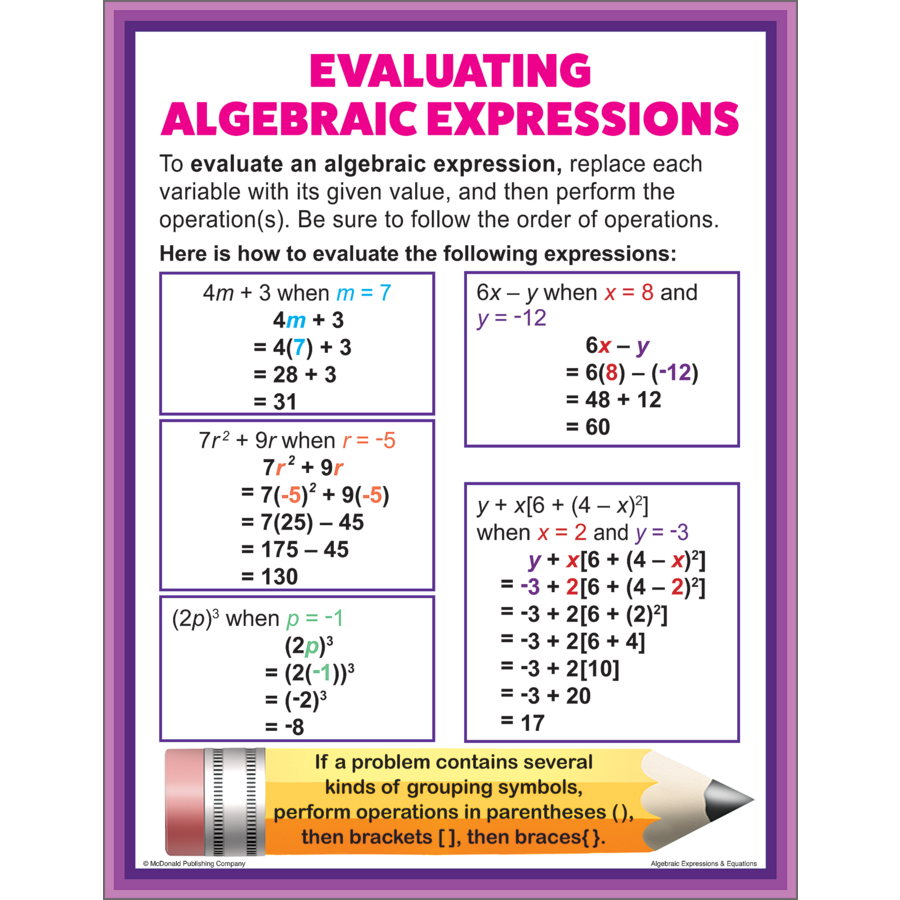Understanding Age Expressions: How To Write An Expression For Current Age In Terms Of A
When it comes to mathematics, age-related problems often emerge, presenting a unique challenge to students and enthusiasts alike. By learning how to write an expression for current age in terms of a variable, often represented as "a", we can simplify these challenges. This exploration not only sharpens our mathematical skills but also enhances our understanding of algebraic expressions. The ability to express age mathematically opens doors to solving real-life problems and developing logical reasoning.
The concept of expressing age in terms of a variable is crucial in various scenarios, such as age-related word problems in algebra. It allows individuals to create equations that can be manipulated to reveal unknowns, such as the current age of a person or the age difference between individuals. This technique is not only vital for academic success but also useful in everyday situations, such as planning events that consider age differences.
Moreover, understanding how to write an expression for current age in terms of a fosters critical thinking skills and enhances problem-solving capabilities. By mastering this concept, we empower ourselves to tackle age-related challenges confidently, whether in academic settings or practical applications. In this article, we will delve deeper into how to express age mathematically, providing examples and guidance to facilitate understanding.
Read also:Discover The Enigmatic American Society Of Magical Negroes
What is the Basic Concept of Age Expressions?
To grasp the idea of writing expressions for age, one must first understand the basic age-related terminologies and relationships. Age can be expressed in various forms, including current age, past age, or future age. When we speak of writing an expression for current age in terms of a, we are referring to the practice of using a variable to represent an unknown or changing aspect of age.
For example, if "a" represents the age of a person, we can express their current age as simply "a". However, if we want to reflect changes over time, we might need to include additional information. For instance, if we are told that a person was 5 years old three years ago, we could express their current age as "a + 3" where "a" would equal 5.
How Can We Create Expressions for Different Ages?
Creating expressions for different ages involves understanding relationships between ages. Here are some steps to guide you:
- Identify the known ages and relationships between individuals.
- Define a variable (like "a") to represent the current age of one individual.
- Express the ages of other individuals in relation to the variable.
- Formulate the equation based on the relationships established.
Can You Provide Examples of Age Expressions?
Absolutely! Here are a few examples of how to write an expression for current age in terms of a:
- If John is currently 10 years old, we can express his age as "a = 10".
- If Sarah is 3 years younger than John, we can express her age as "a - 3".
- If their friend Mike is twice John's age, we can express Mike's age as "2a".
What If We Know Future or Past Ages?
When we know future or past ages, we can adjust our expressions accordingly. For instance:
- If we know that John will be 15 in 5 years, we can write: "a + 5 = 15".
- If Sarah was 8 years old two years ago, we can express her current age as "a = 8 + 2".
Who is a Celebrity Example for Age Expressions?
Let's take a look at a famous personality to see how age expressions apply in real life. We will use Taylor Swift as our example.
Read also:Discover The Craft Opa Opa Brewing Cos Exceptional Brews
| Name | Date of Birth | Current Age | Notable Achievements |
|---|---|---|---|
| Taylor Swift | December 13, 1989 | 34 (as of 2023) | Grammy Awards, Best-Selling Album, Philanthropy |
Now, let’s express Taylor Swift's current age in terms of "a". If we let "a" represent her age in 2023, we can express it as:
- "a = 34".
- To express her age in 2020, we could say "a - 3 = 31".
How Do Age Expressions Help in Problem Solving?
By writing an expression for current age in terms of a variable, we simplify complex age-related problems. This approach allows us to break down information into manageable pieces, making it easier to solve equations and arrive at solutions logically. Additionally, age expressions can be used in various fields, including finance, health, and social sciences, where understanding age dynamics is crucial.
Can Age Expressions Be Used in Real-Life Scenarios?
Yes, age expressions are not confined to academic problems; they have real-life applications in various scenarios:
- Planning family events based on age differences.
- Estimating retirement ages and planning finances.
- Understanding generational differences in workplaces.
What Are the Common Mistakes in Creating Age Expressions?
While creating age expressions, individuals may encounter several common mistakes, including:
- Neglecting to establish clear relationships between ages.
- Miscalculating years in past or future expressions.
- Failing to define the variable correctly.
Conclusion: Why is Writing Age Expressions Important?
Writing an expression for current age in terms of a variable is a foundational skill that extends beyond the classroom. It equips individuals with the tools to approach age-related problems with confidence, making sense of relationships and time. By understanding and applying these concepts, we can better navigate the complexities of life, from personal planning to professional interactions. Mastering the art of age expressions ultimately enhances our analytical thinking and problem-solving abilities.
Article Recommendations


